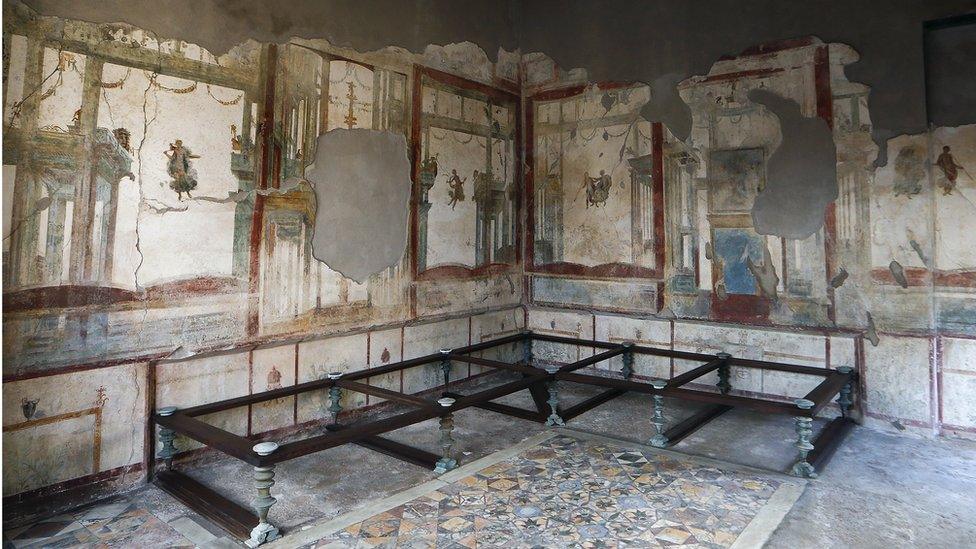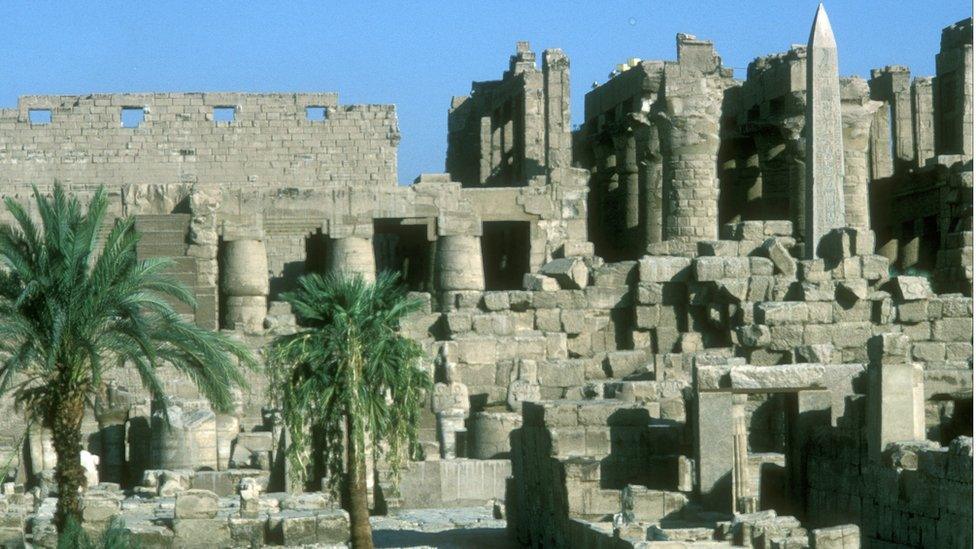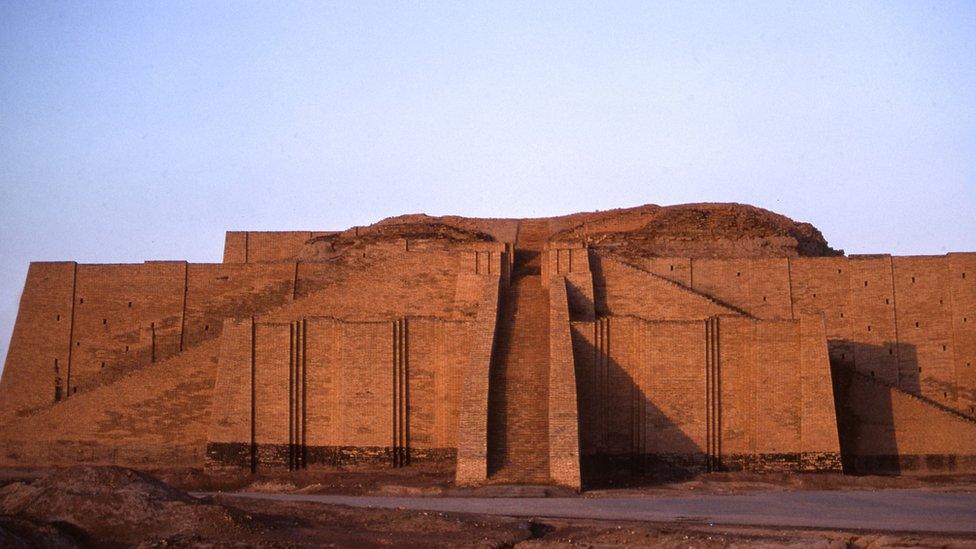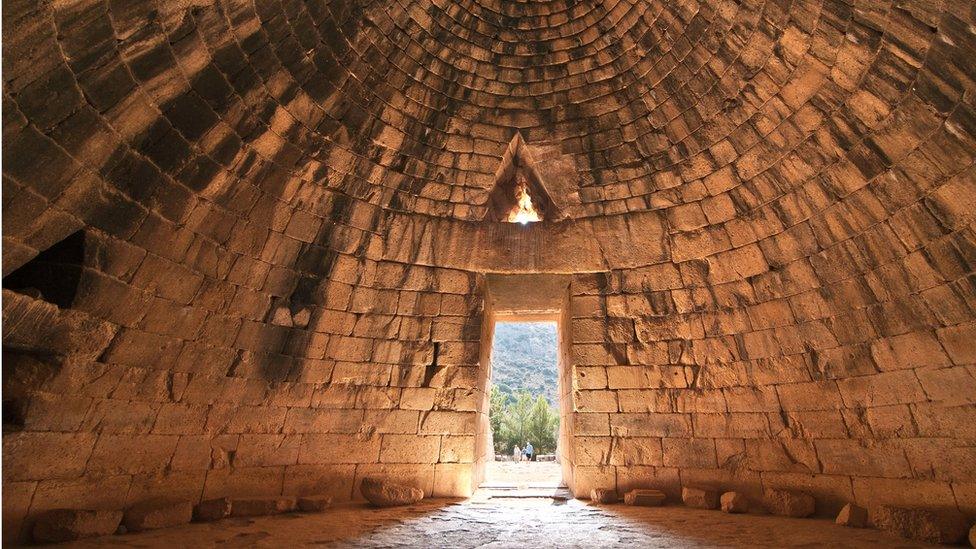How do Britain's Bronze Age buildings compare?
- Published

One building people from the "British Pompeii" would not have seen was this one in actual Pompeii. The town was only founded in the 6th Century BC and buildings such as these are from much later
The Bronze Age houses recovered from river silt in Cambridgeshire have been hailed as "an extraordinary time capsule" and even "Britain's Pompeii".
The Fenland buildings are dated to 1,000-800BC, towards the end of Britain's Bronze Age. If we were to go back to that time, what other buildings could we have seen?

Egypt's great Karnak temple complex was hundreds of years old at the time of the Must Farm buildings
By 1,000-800BC Egypt's New Kingdom, which produced such magnificent monuments as the temples of Karnak and Abu Simbel, was already over. The Giza pyramids were over 1,000 years old.

The much-rebuilt Ziggurat of Ur dates from the early Bronze Age
The pharaoh Sheshonq of the 22nd dynasty added some embellishments to the Karnak complex at the time of the Must Farm buildings. As Raiders of the Lost Ark viewers will remember, he is also said to have looted the treasures from Solomon's Temple in Jerusalem - which would no doubt have been an impressive building too.
Wear and tear have been less kind to the brick monuments of Mesopotamia and other parts of the Near East than to the stones of Egypt. But outstanding monuments would have included the lofty ziggurats ascending to the sky, like that of Ur, constructed in the early Bronze Age and rebuilt many times.

Monuments existing at the time in Greece included the so-called "Treasury of Atreus"
Travellers to Greece would have been able to see the sizeable buildings erected by the Mycenaean civilisation - which had collapsed some 200 years before, although no-one is sure why.
The best-preserved of these are the great "beehive tombs" of Mycenae, particularly the so-called "Treasury of Atreus".

Stonehenge was arranged in the form in which we know it before 2,000BC
And in Britain, as in many parts of Europe, the monuments of the Neolithic period which preceded the Bronze Age would still have been prominent, as indeed Stonehenge still is today. The stones were set up in the form in which we know them before 2,000BC.